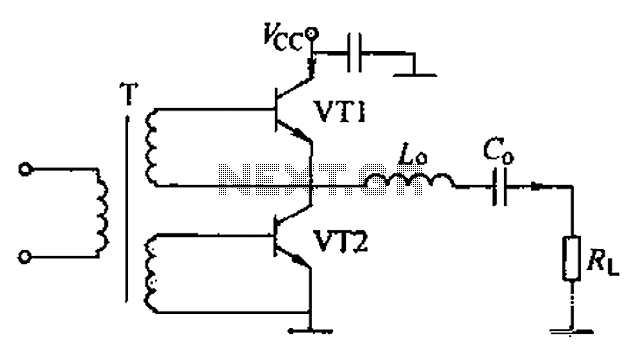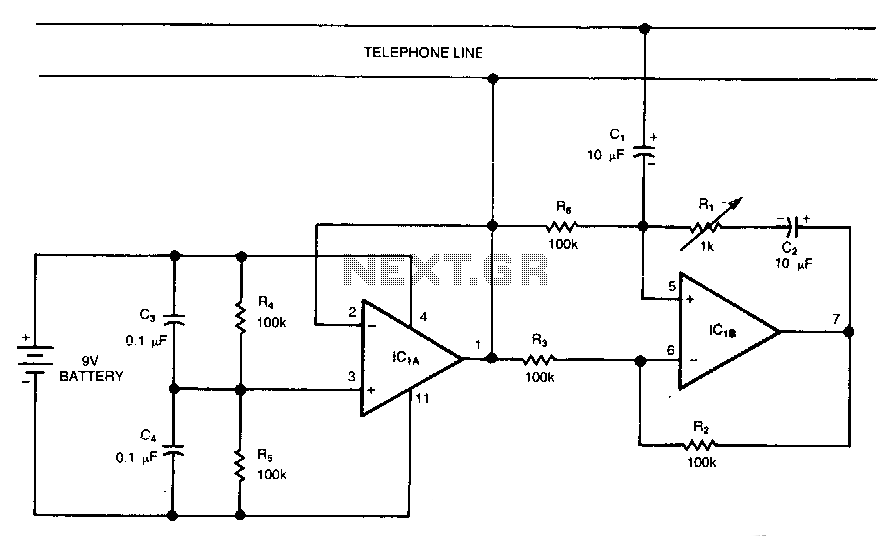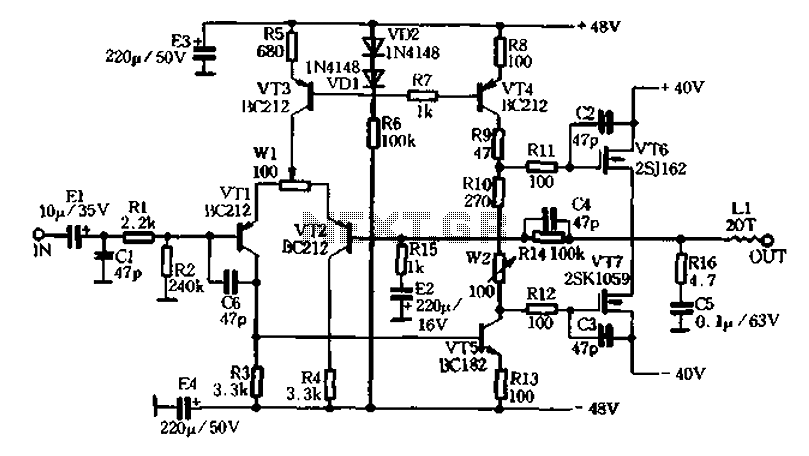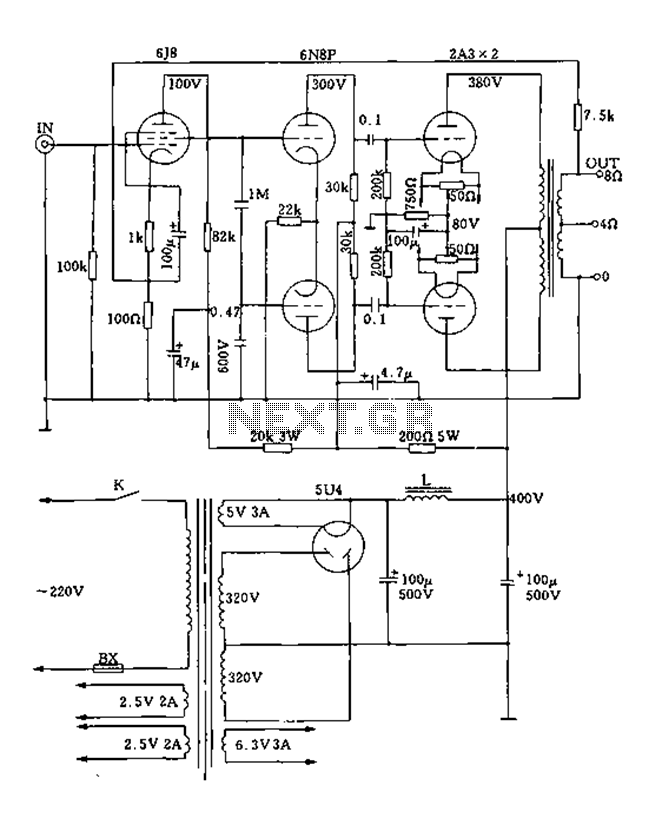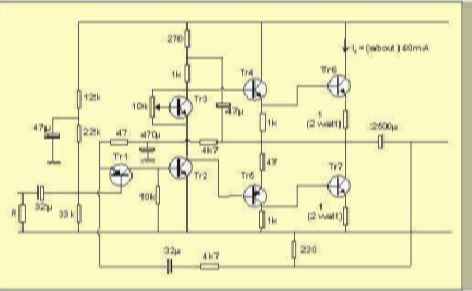
Video distribution amplifier
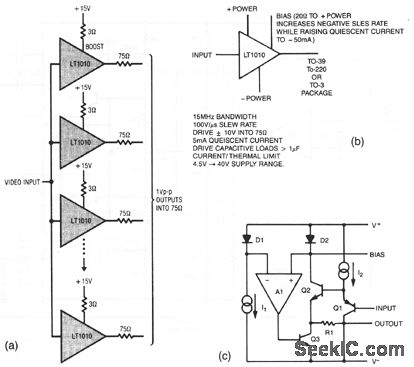
The resistors in the output lines are used to isolate reflections from unterminated lines. If the line characteristics are known, the resistors can be removed. To satisfy NTSC gain-phase requirements, a small-value boost resistor is employed. Figures 3-27B and 3-27C illustrate the characteristics of the LT1010.
The circuit design incorporates resistors in the output lines primarily to mitigate signal reflections that can occur in unterminated transmission lines. This is crucial in high-frequency applications where impedance mismatches can lead to significant signal integrity issues. The use of resistors aids in damping these reflections, ensuring that the transmitted signal maintains its integrity over distance.
In scenarios where the characteristics of the transmission line are well understood, the output resistors may be omitted, allowing for a more straightforward circuit design without compromising performance. However, careful consideration must be given to the potential for reflections if the line is not properly terminated.
To comply with NTSC (National Television System Committee) gain-phase specifications, a small-value boost resistor is integrated into the circuit. This component is essential for maintaining the required signal levels and phase relationships, which are critical for proper video signal transmission.
The LT1010 operational amplifier is referenced in the context of this design, with Figures 3-27B and 3-27C providing graphical representations of its characteristics. The LT1010 is known for its high-speed performance and low distortion, making it suitable for applications requiring precise signal processing. Understanding its characteristics is vital for optimizing the overall circuit performance, particularly in video signal applications where fidelity is paramount.The resistors in the output lines are included to isolate reflections from unterminated lines. If the line characteristics are known, the resistors can be deleted. To meet NTSC gain-phase requirements, a small-value boost resistor is used. Figures 3-27B and 3-27C show the LT1010 characteristics. 🔗 External reference
The circuit design incorporates resistors in the output lines primarily to mitigate signal reflections that can occur in unterminated transmission lines. This is crucial in high-frequency applications where impedance mismatches can lead to significant signal integrity issues. The use of resistors aids in damping these reflections, ensuring that the transmitted signal maintains its integrity over distance.
In scenarios where the characteristics of the transmission line are well understood, the output resistors may be omitted, allowing for a more straightforward circuit design without compromising performance. However, careful consideration must be given to the potential for reflections if the line is not properly terminated.
To comply with NTSC (National Television System Committee) gain-phase specifications, a small-value boost resistor is integrated into the circuit. This component is essential for maintaining the required signal levels and phase relationships, which are critical for proper video signal transmission.
The LT1010 operational amplifier is referenced in the context of this design, with Figures 3-27B and 3-27C providing graphical representations of its characteristics. The LT1010 is known for its high-speed performance and low distortion, making it suitable for applications requiring precise signal processing. Understanding its characteristics is vital for optimizing the overall circuit performance, particularly in video signal applications where fidelity is paramount.The resistors in the output lines are included to isolate reflections from unterminated lines. If the line characteristics are known, the resistors can be deleted. To meet NTSC gain-phase requirements, a small-value boost resistor is used. Figures 3-27B and 3-27C show the LT1010 characteristics. 🔗 External reference
